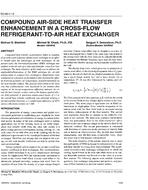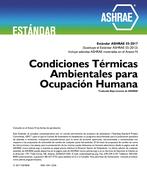Description
Compound heat transfer augmentation refers to coupling of an active and a passive enhancement technique in an effort to benefit from the advantages of both techniques. In the present study, the electrohydrodynamic (EHD) technique was applied to the air side of a tube-and-plate-fin, cross-flow heat exchanger. The main objective of the study was to address the applicability/limitations of the EHD technique for air-side enhancement in compact heat exchangers. Experiments were conducted as a function of parameters that included the effect of electrode geometry, air temperature, and frost formation on the heat transfer surface. The general observation in all cases was that enhancements were maximum in the laminar flow regime, at the lowest temperature difference between the air and the heat transfer surface, and at the highest applied electric field potential. A maximum enhancement factor of 3.3 in the overall heat transfer coefficient was obtained utilising a barbed parallel electrode at a temperature difference of 20degC and at a Reynolds number of 1,000.
KEYWORDS: year 1995, heat flow, cross flow heat exchangers, heat exchangers, performance, compact heat exchangers, refrigerants, experiment, electrodes, geometry, air temperature, frost, streamline flow, temperature difference, heat transfer coefficient, optimisation
Citation: Symposium, ASHRAE Trans. 1995, Vol.101, Part 2
Product Details
- Published:
- 1995
- File Size:
- 1 file , 680 KB
- Product Code(s):
- D-17241




